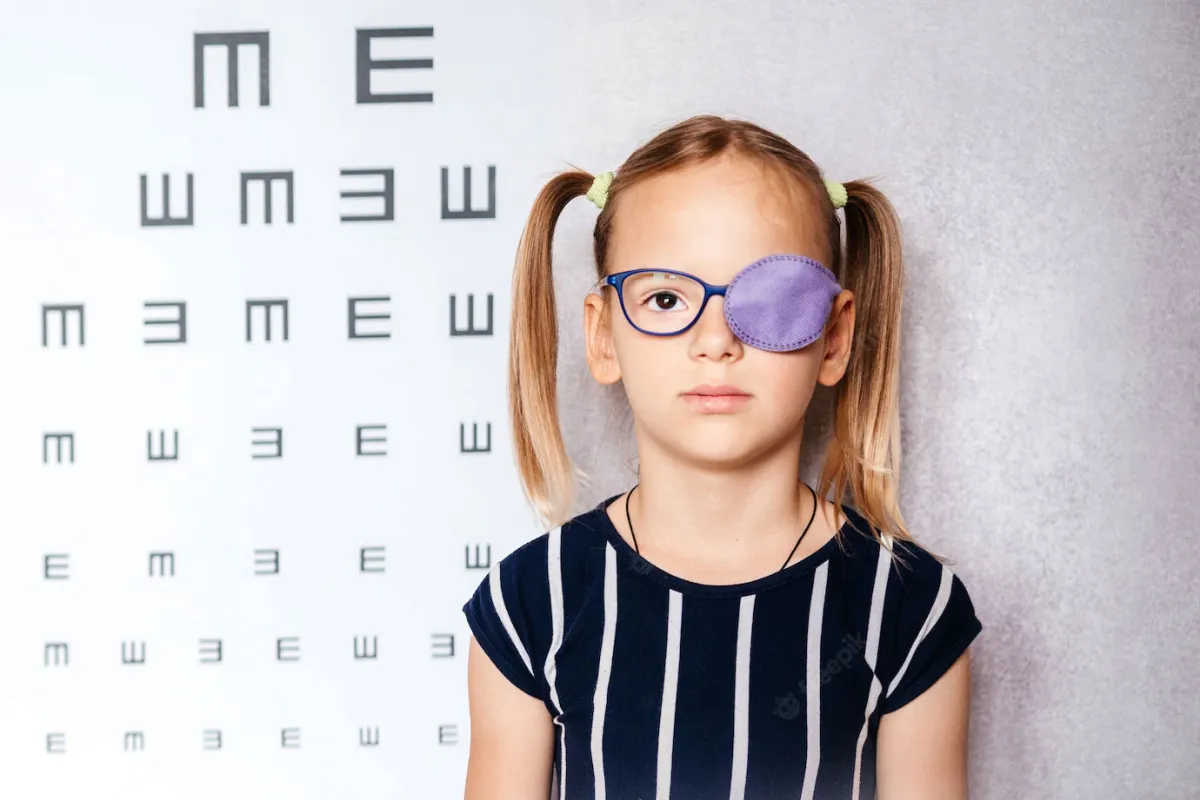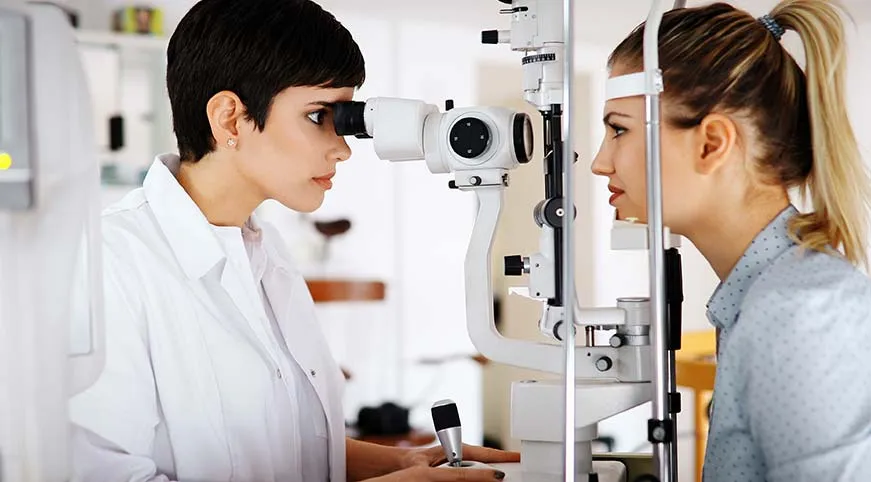Children’s Eye Health
Early Signs to Watch for Children’s Eye Health
FSDAVCFEBFEVSDDVFSD
FSDAVCFEBFEVSDDVFSD
FSDAVCFEBFEVSDDVFSD
Spotting Vision Problems in Kids: Why It Matters
Children's eye health is a crucial aspect of their overall well-being, yet it often slips under the radar. Vision problems in children can significantly impact their learning and development, making early detection essential. A child struggling to see the board at school or unable to read their favorite book clearly can hinder their academic and social progress. Recognizing and addressing these issues early can prevent long-term complications and support healthy development. This section will shed light on the early signs of eye problems in children, encouraging parents to be vigilant in monitoring their child's eye health to support their thriving both academically and socially.
Children's eye health is a crucial aspect of their overall well-being, yet it often slips under the radar. Vision problems in children can significantly impact their learning and development, making early detection essential. A child struggling to see the board at school or unable to read their favorite book clearly can hinder their academic and social progress.

Recognizing and addressing these issues early can prevent long-term complications and support healthy development. This section will shed light on the early signs of eye problems in children, encouraging parents to be vigilant in monitoring their child's eye health to support their thriving both academically and socially.

The Importance of Early Detection
Early detection of vision problems in children is critical for their development and learning. Vision issues can lead to difficulties in school, affecting reading, writing, and overall academic performance. Untreated vision problems may also impact a child’s social interactions and self-esteem.
By identifying these issues early, parents and healthcare providers can implement effective treatments that can significantly improve a child’s quality of life. Regular eye exams for kids and being observant of any changes in a child's vision or behavior are essential steps in preventing long-term complications.
Common Vision Problems in Children
Children can experience a variety of vision problems, with refractive errors being among the most common. Myopia, or nearsightedness, causes difficulty seeing distant objects clearly. Hyperopia, or farsightedness, results in trouble focusing on close objects. Astigmatism, an imperfection in the curvature of the eye, can lead to blurred vision at all distances.
Another significant issue is amblyopia, commonly known as lazy eye, where one eye is weaker than the other. This condition can develop due to strabismus, where the eyes do not align properly, causing double vision or a loss of depth perception. These vision problems can hinder a child's ability to see clearly, affecting their daily activities, learning, and overall development. Early diagnosis and treatment are crucial to correct these issues and prevent long-term effects on vision and quality of life.
Signs of Vision Problems
Parents should be alert to subtle signs that might indicate vision problems in their children. Behavioral indicators include frequent squinting, tilting the head, or covering one eye to see better. These actions can signal that the child is struggling to focus on objects.
Physical symptoms such as red or watery eyes, frequent rubbing of the eyes, or sensitivity to light can also be signs of underlying issues. Academic and play indicators are important. A child experiencing difficulty with reading, writing, or other close-up tasks may have vision problems.
Poor performance in school, avoiding activities that require clear vision, like sports or playing with detailed toys, and sitting too close to the television or holding books very close to the face are all warning signs. Recognizing these subtle signs early allows for timely intervention, which can significantly improve the child's vision and overall quality of life.
The Role of Regular Eye Exams

Regular children's vision screening is essential for detecting vision problems early in children. These exams can identify issues before they become more serious, allowing for timely treatment. Children should have their eyes checked at regular intervals, starting from infancy. Eye exams should be part of a child's routine health check-ups to catch any changes in vision promptly.
Early exams can catch problems that might otherwise go unnoticed, such as refractive errors or conditions like amblyopia and strabismus. Regular check-ups with an eye care professional are a proactive step towards maintaining good eye health and preventing long-term vision problems.

In addition to routine vision screenings, parents should also be observant of any signs that may indicate potential vision issues in their children. Common indicators include squinting, frequent eye rubbing, sitting too close to the TV, or complaining of headaches and eye strain. These behaviors can be subtle but are important cues that a child's vision might be compromised. Addressing these signs promptly with a visit to an eye care professional can lead to early intervention and more effective treatment.
How Parents Can Monitor Eye Health at Home
Parents play an important role in monitoring their child’s eye health at home. Observing behaviors and noting any signs of vision issues can help catch problems early. Look for signs such as frequent squinting, tilting the head, or covering one eye. Be aware of physical symptoms like red or watery eyes, frequent eye rubbing, or sensitivity to light. Encouraging healthy habits is also important.
Limit screen time to reduce eye strain, promote outdoor play to support overall eye health, and ensure proper lighting for activities like reading and homework. Simple practices like maintaining a balanced diet rich in vitamins beneficial for eye health can also support vision. By being vigilant and proactive, parents can help prevent vision problems and support their child's overall well-being.
Treatment and Intervention Options For Children Eye Care
There are various treatment options available for children with vision problems. Corrective lenses, such as glasses or contact lenses, are commonly used to address refractive errors like myopia, hyperopia, and astigmatism. Vision therapy can help improve conditions such as amblyopia (lazy eye) and strabismus (crossed eyes). This therapy involves exercises and activities designed to strengthen the eye muscles and improve coordination.
In severe cases, surgical interventions may be necessary to correct alignment issues or other structural problems. Maintaining a balanced diet rich in vitamins and nutrients that support eye health, such as Vitamin A, C, and E, can contribute to overall vision improvement. By addressing vision problems with appropriate treatments and interventions, parents and healthcare providers can help children achieve better visual outcomes and increase their quality of life.
There are various treatment options available for children with vision problems. Corrective lenses, such as glasses or contact lenses, are commonly used to address refractive errors like myopia, hyperopia, and astigmatism. Vision therapy can help improve conditions such as amblyopia (lazy eye) and strabismus (crossed eyes). This therapy involves exercises and activities designed to strengthen the eye muscles and improve coordination.
In severe cases, surgical interventions may be necessary to correct alignment issues or other structural problems. Maintaining a balanced diet rich in vitamins and nutrients that support eye health, such as Vitamin A, C, and E, can contribute to overall vision improvement. By addressing vision problems with appropriate treatments and interventions, parents and healthcare providers can help children achieve better visual outcomes and increase their quality of life.
When to Seek Professional Help?
Parents should seek professional help if they notice specific eye health warning signs such as persistent squinting, eye rubbing, or complaints of blurred vision. Other signs include difficulty reading, holding objects very close to the face, or avoiding activities that require good vision. An optometrist or ophthalmologist can provide a thorough evaluation and recommend appropriate treatments.
Pediatric eye care specialists are trained to handle children's unique eye health needs and can offer targeted care for young patients. Early consultation with a professional supports timely intervention, which can prevent more serious issues and support the child's visual and overall development.
Wind up
Monitoring and maintaining children’s eye health is vital for their development and well-being. By recognizing early signs of vision problems, parents can seek timely interventions that can significantly improve their child’s quality of life. Regular eye exams and healthy habits play an important role in maintaining good vision.
Parents should stay vigilant and proactive, scheduling regular check-ups and consulting with eye care professionals if any concerns arise. Taking these steps can help children have the clear vision they need for learning and growth. For expert advice and eye care services, visit Kleinwood Vision.

Contact Info
Hours of Operation
Mon - Fri | 9:00 AM - 5:00 PM
Sat - Sun | Closed
Holiday Hours: We are closed for the following holidays: New Years Day, Memorial Day, Independence Day, Labor Day, Thanksgiving Day, Christmas Day
© 2026 Kleinwood Vision. All rights Reserved.


